Delving into the world of avian splendor, this compilation unveils the captivating realm of 15 Birds With Red Beaks.
The vibrant hue of a bird’s beak serves as both a visual spectacle and a testament to the diverse adaptations within the avian kingdom.
From the iconic Northern Cardinal, with its vibrant red beak and melodious tunes, to the elusive elegance of the Elegant Trogon gracing lush forests, each entry in this ornithological journey showcases the stunning convergence of form and function.
These birds, dispersed across continents and habitats, share a common thread of evolutionary ingenuity reflected in their crimson bills.
As we embark on this exploration, we unravel tales of survival, ecological significance, and the sheer beauty that characterizes each feathered denizen.
Join us in unraveling the secrets behind these red-beaked wonders, as we celebrate the intricacies of nature’s brushstroke and the avian tapestry that enriches our understanding of the natural world. Stay focused.
15 Birds With Red Beaks
In the vibrant tapestry of avian diversity, each bird species brings a unique splash of color and character to our ecosystems.
From the melodious tunes of songbirds to the sleek, streamlined forms of waterfowl, the following snapshots offer a glimpse into the captivating lives of birds with red beaks, showcasing nature’s exquisite artistry and evolutionary wonders.
1. Northern Cardinal

- Scientific name: Cardinalis cardinalis
- Population: Common and widespread
- Life span: 3-4 years
- Size: 8-9 inches
- Weight: 1.5-1.7 ounces
- Food: Seeds, fruits, insects
The Northern Cardinal, with its striking red beak, is a vibrant songbird found across North America. Known for their robust, melodious tunes, these birds thrive in a variety of habitats.
Cardinals primarily feed on seeds and fruits, supplemented with insects. Their strong beaks are well-adapted for cracking open seeds and nuts.
2. Keel-Billed Toucan
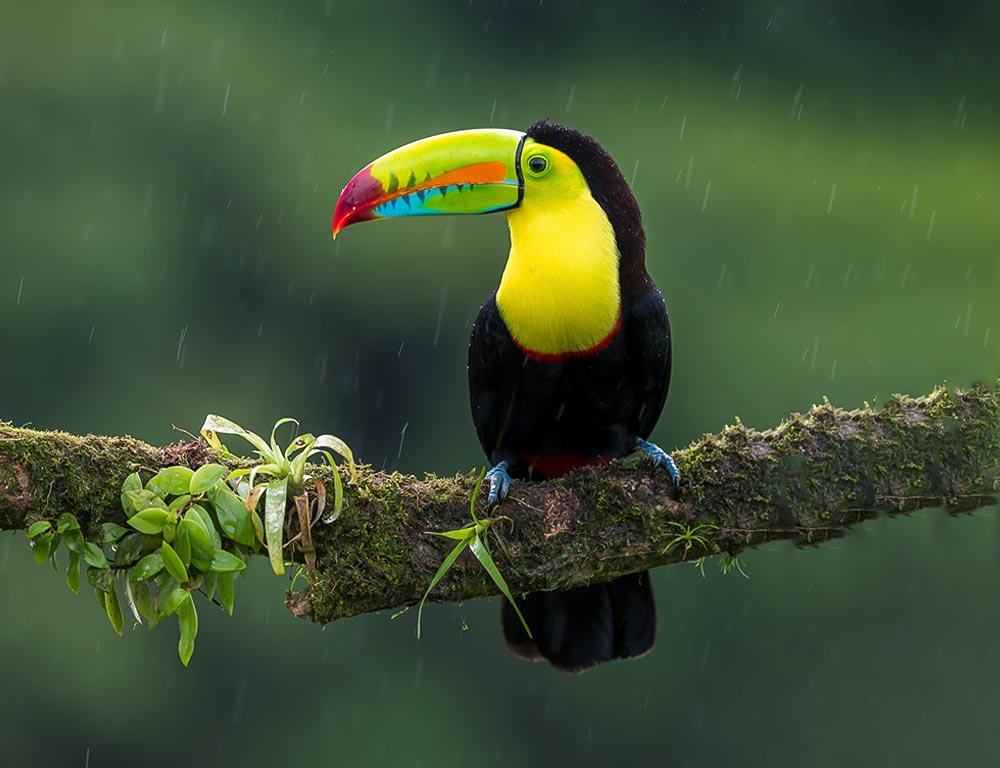
- Scientific name: Ramphastos sulfuratus
- Population: Stable
- Life span: 15-20 years
- Size: 20 inches
- Weight: 1-1.5 pounds
- Food: Fruits, insects, small reptiles
The Keel-Billed Toucan, recognized by its large, vibrant beak, inhabits the tropical forests of Central and South America.
With a diverse diet comprising fruits, insects, and even small reptiles, these toucans play a crucial role in seed dispersal within their ecosystems.
3. Rosy-Faced Lovebird
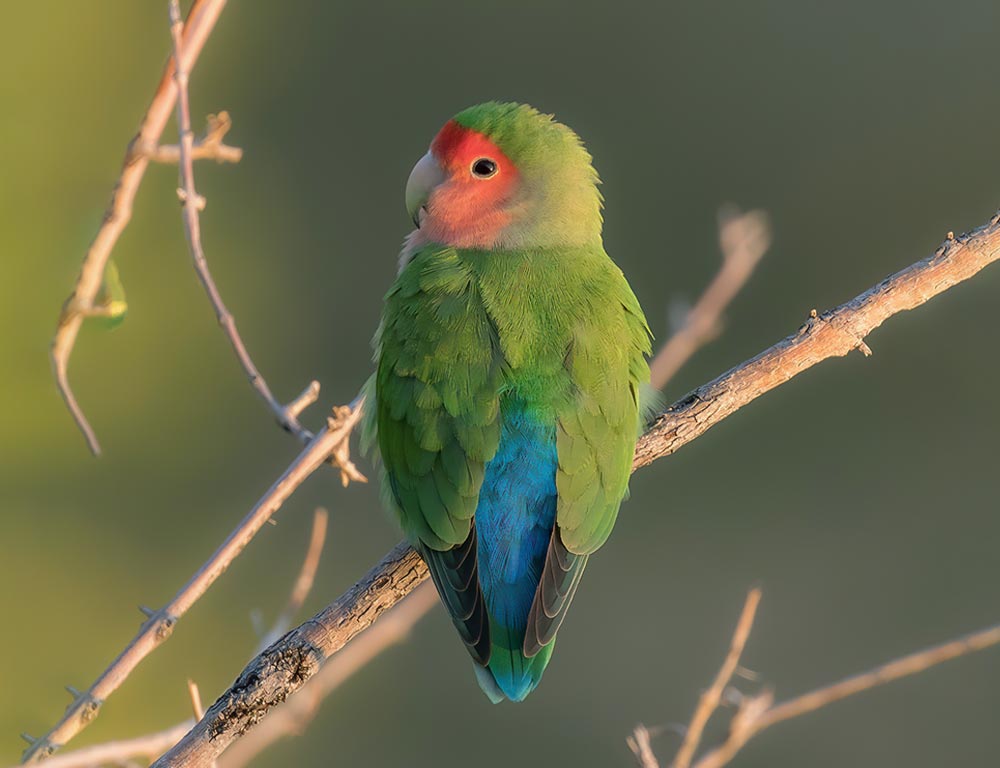
- Scientific name: Agapornis roseicollis
- Population: Common in captivity
- Life span: 10-15 years
- Size: 5-7 inches
- Weight: 2-3 ounces
- Food: Seeds, fruits, vegetables
The Rosy-Faced Lovebird, native to southwestern Africa, captivates with its charming appearance.
Often kept as pets, these sociable birds form strong pair bonds and thrive on a diet rich in seeds, fruits, and vegetables.
4. Red-Headed Woodpecker
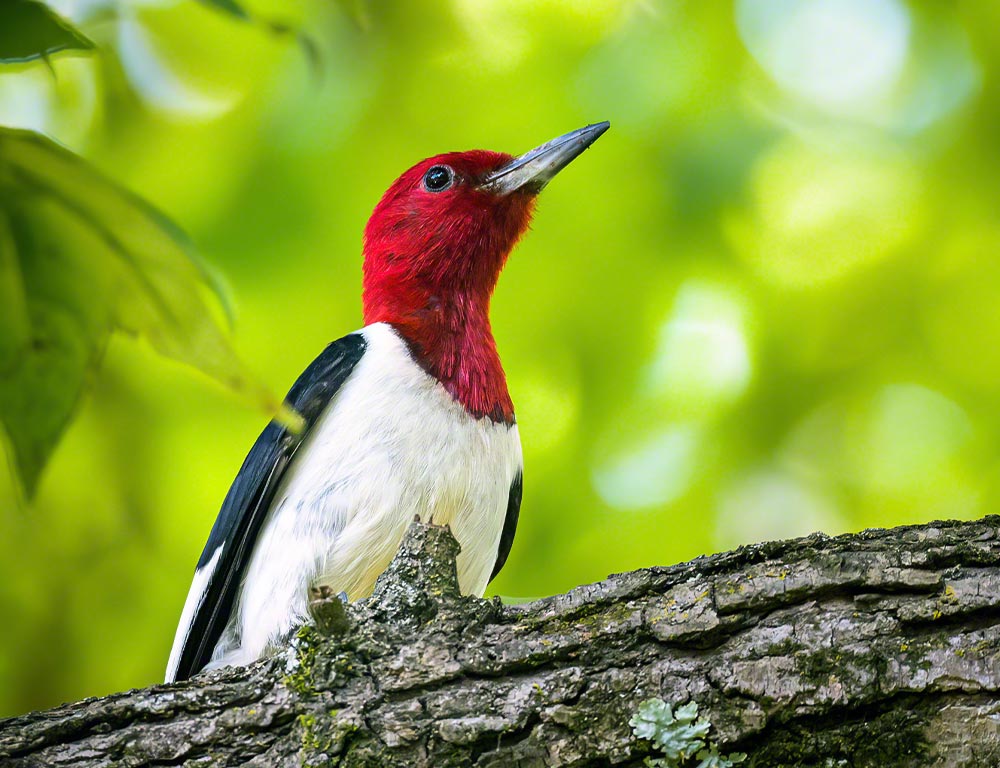
- Scientific name: Melanerpes erythrocephalus
- Population: Declining
- Life span: 9-10 years
- Size: 7.5-9.1 inches
- Weight: 2-3 ounces
- Food: Insects, fruits, nuts
The Red-Headed Woodpecker, distinguished by its vibrant redhead and beak, is a North American species facing population decline.
These woodpeckers are skilled foragers, using their strong bills to extract insects, fruits, and nuts from trees.
Conservation efforts are crucial to preserving their habitats and reversing their declining numbers.
5. American Robin

- Scientific name: Turdus migratorius
- Population: Abundant and widespread
- Life span: 2 years (average)
- Size: 9-11 inches
- Weight: 2.7-3 ounces
- Food: Insects, worms, fruits
The American Robin, recognized by its red-orange breast, is a common sight in North America.
These birds are versatile, adapting their diet according to the season consuming insects and worms in the warmer months and shifting to fruits in colder weather.
Known for their melodic songs, American Robins are often associated with the arrival of spring.
6. Roseate Spoonbill
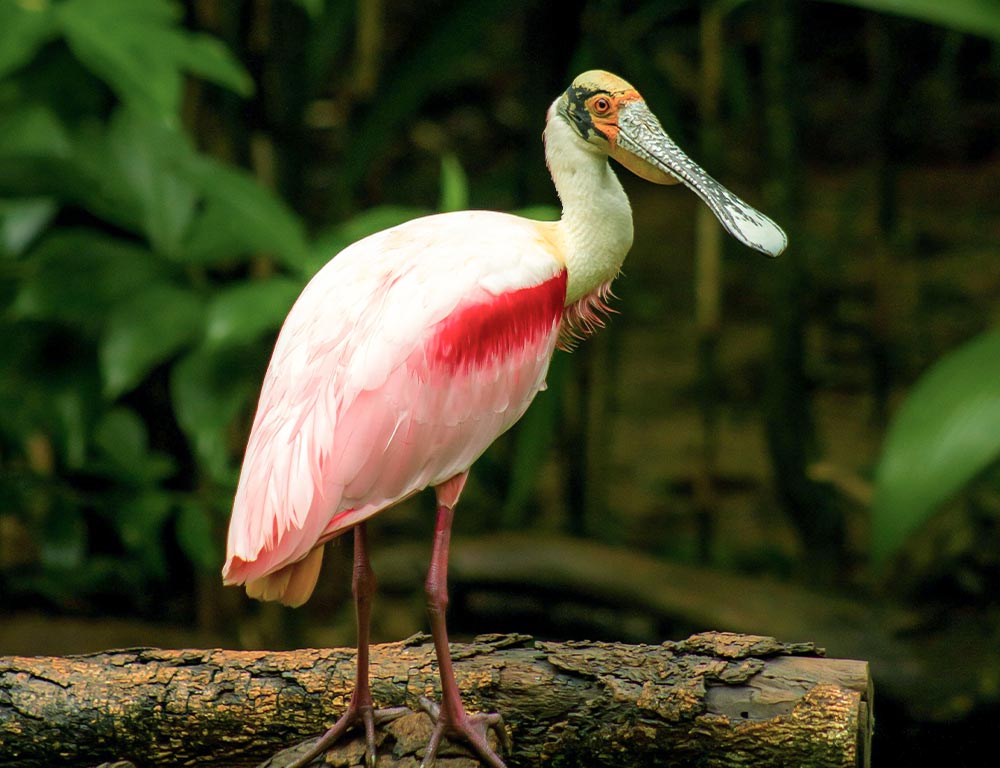
- Scientific name: Platalea ajaja
- Population: Least Concern
- Life span: 10-15 years
- Size: 28-34 inches
- Weight: 2.6-4 pounds
- Food: Fish, crustaceans, insects
The Roseate Spoonbill boasts a distinctive spoon-shaped bill and vibrant pink plumage.
Inhabiting wetlands of the Americas, these wading birds use their specialized bills to sweep through water, capturing fish, crustaceans, and insects.
Their unique appearance and behaviors make them a captivating species to observe.
7. House Finch

- Scientific name: Haemorhous mexicanus
- Population: Common and widespread
- Life span: 2-5 years
- Size: 5-6 inches
- Weight: 0.6-1 ounce
- Food: Seeds, buds, fruits
The House Finch, native to western North America, has adapted well to urban environments. With a varied diet, including seeds, buds, and fruits, these finches are known for their cheerful songs and vibrant plumage.
They are often found in flocks, foraging for food in both natural and human-altered landscapes.
8. Purple Finch

- Scientific name: Haemorhous purpureus
- Population: Stable
- Life span: 3-4 years
- Size: 6-7 inches
- Weight: 0.9-1.2 ounces
- Food: Seeds, berries, insects
The Purple Finch, with its richly colored plumage, is found in North America’s coniferous and mixed forests.
These finches primarily feed on seeds, berries, and insects. Distinguishing males by their vibrant red-purple hue, these birds contribute to the region’s biodiversity.
9. Painted Bunting
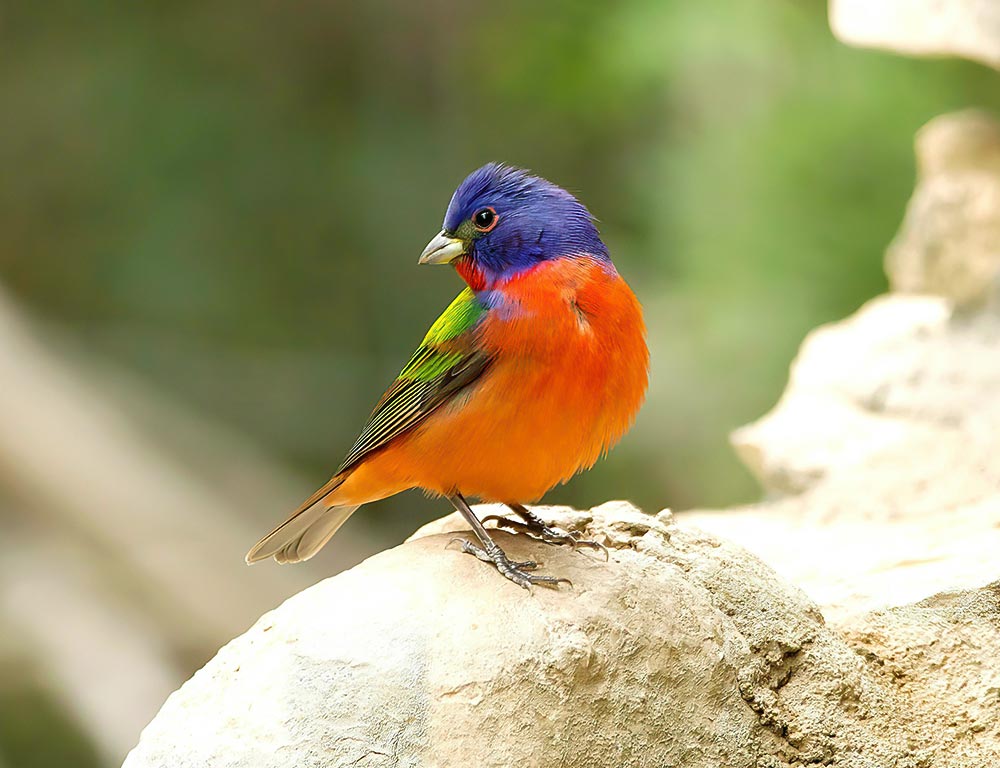
- Scientific name: Passerina ciris
- Population: Concern for declining numbers
- Life span: 2-4 years
- Size: 4.5-5 inches
- Weight: 0.4-0.5 ounces
- Food: Seeds, insects
The Painted Bunting, renowned for its dazzling multicolored plumage, faces challenges due to habitat loss. Inhabiting the southeastern United States, these small birds feed on a diet of seeds and insects.
Conservation efforts are crucial to safeguarding their habitats and preserving their stunning beauty.
10. Summer Tanager
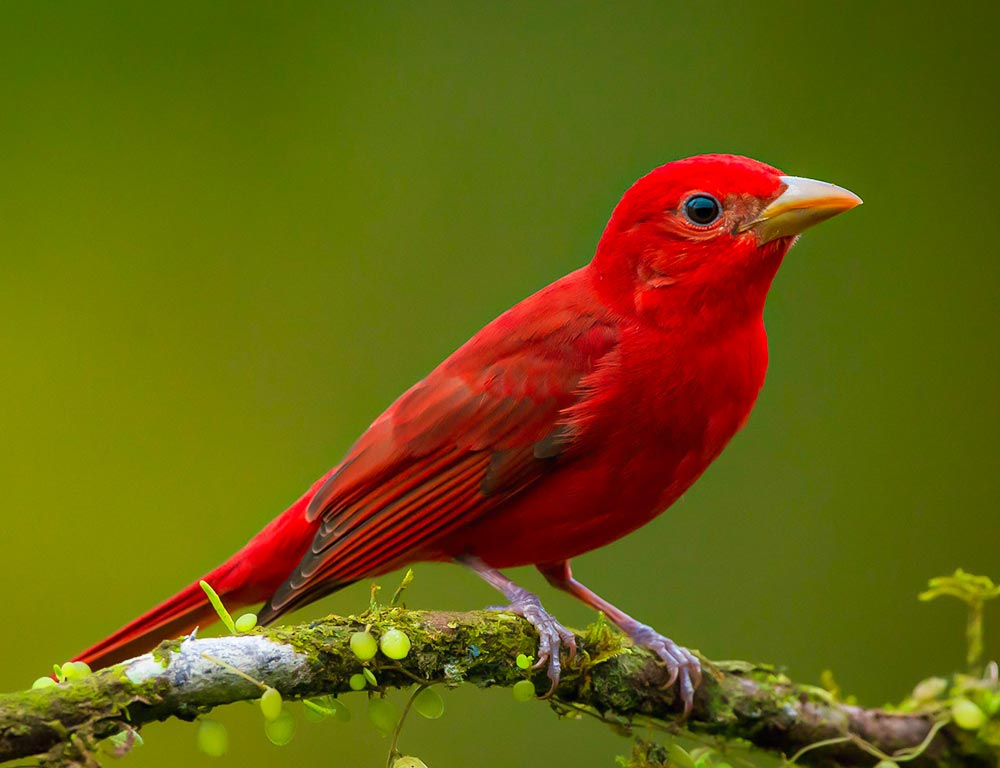
- Scientific name: Piranga rubra
- Population: Stable
- Life span: 2-5 years
- Size: 7-8 inches
- Weight: 1 ounce
- Food: Insects, fruits
The Summer Tanager, known for its bright red plumage, is found in the woodlands of North and South America.
These birds primarily feed on insects and fruits. Their melodious songs and vibrant appearance contribute to the biodiversity of their habitats, making them a delight for birdwatchers.
11. Hepatic Tanager
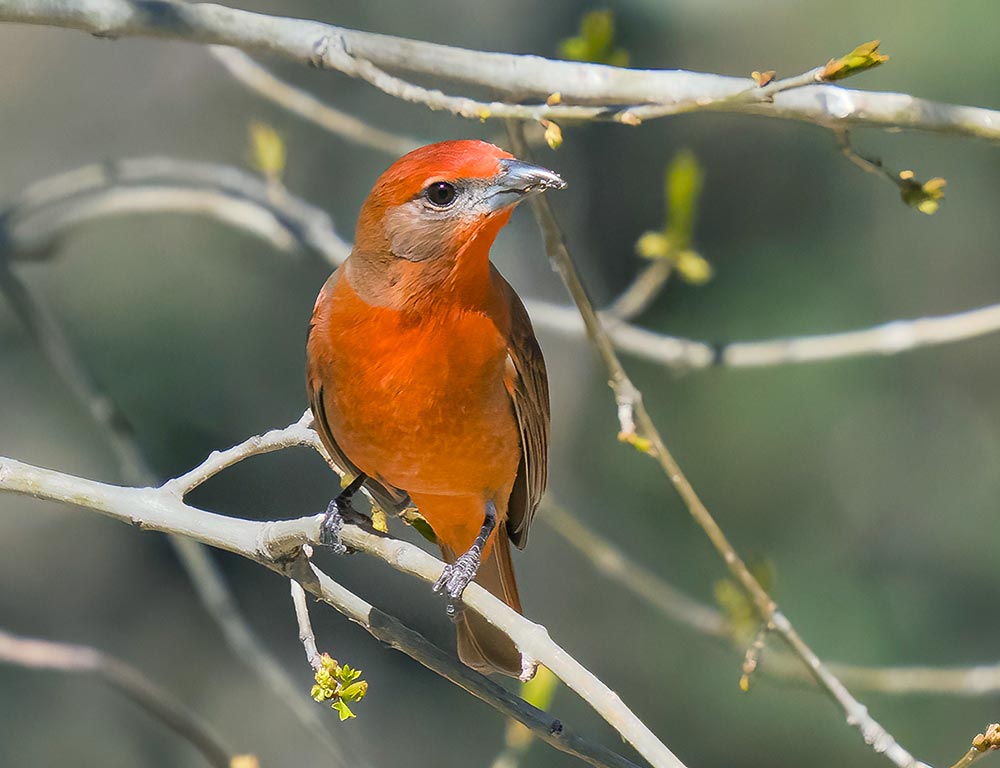
- Scientific name: Piranga flava
- Population: Stable
- Life span: 2-5 years
- Size: 7-8 inches
- Weight: 1 ounce
- Food: Insects, fruits
The Hepatic Tanager, belonging to the Piranga genus, showcases a rich red plumage. Inhabiting mountainous regions of North and South America, these tanagers feed on insects and fruits.
Their striking appearance and preference for higher elevations make them a unique and cherished species among bird enthusiasts.
12. Elegant Trogon
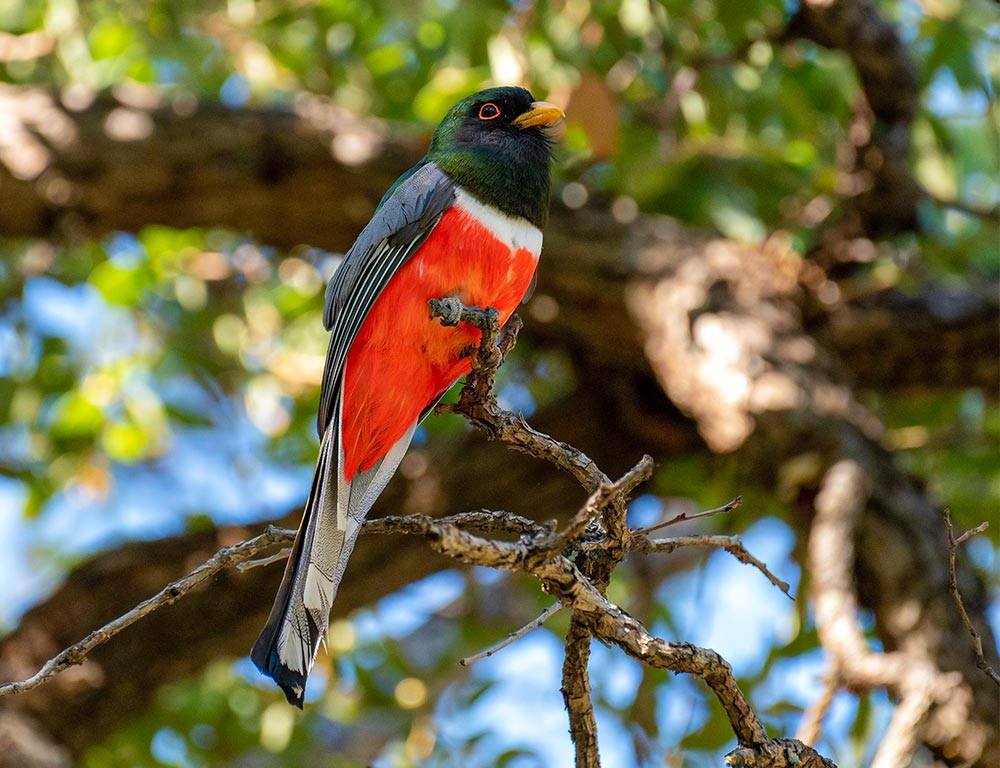
- Scientific name: Trogon elegans
- Population: Stable
- Life span: 6-8 years
- Size: 10-12 inches
- Weight: 4-5 ounces
- Food: Insects, fruits
The Elegant Trogon, residing in lush forests of North and Central America, is recognized for its vibrant green and red plumage. Preferring wooded habitats, these trogons feed on a diet of insects and fruits.
Their elusive nature and stunning appearance make them a sought-after species for birdwatchers.
13. Vermilion Flycatcher
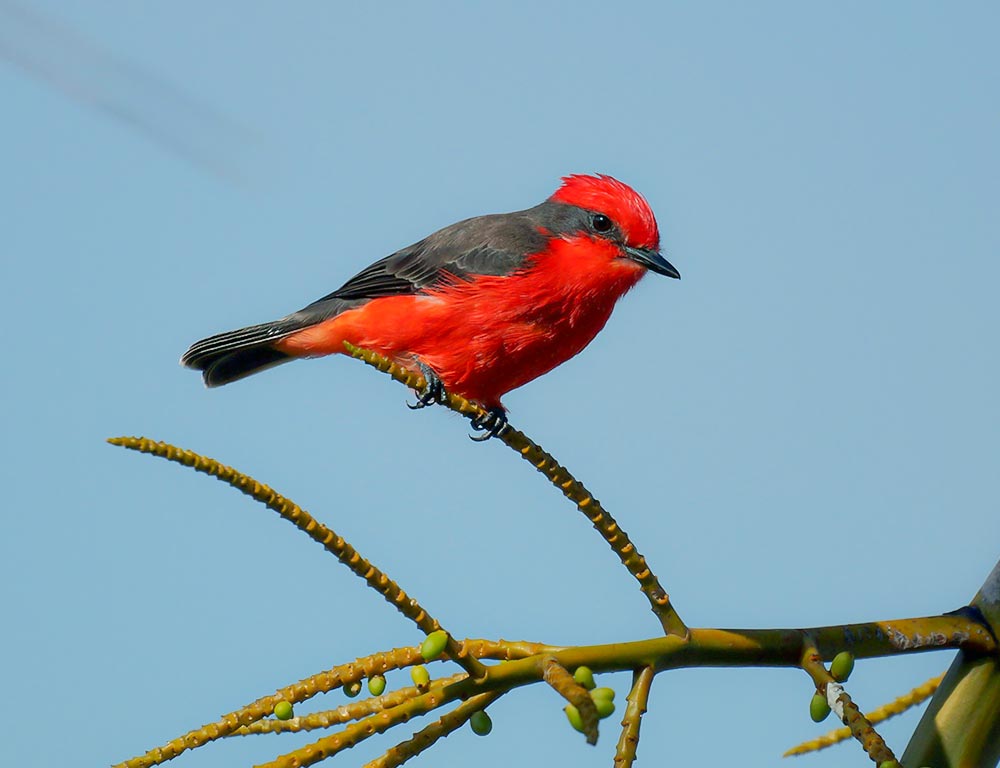
- Scientific name: Pyrocephalus rubinus
- Population: Stable
- Life span: 3-5 years
- Size: 6-7 inches
- Weight: 0.7-0.9 ounces
- Food: Insects
The Vermilion Flycatcher, with its brilliant red plumage, is a captivating sight in open habitats across the Americas. These flycatchers specialize in catching insects on the wing, displaying aerial acrobatics.
Their vibrant appearance and agile hunting techniques contribute to the biodiversity of their ecosystems.
14. Common Merganser
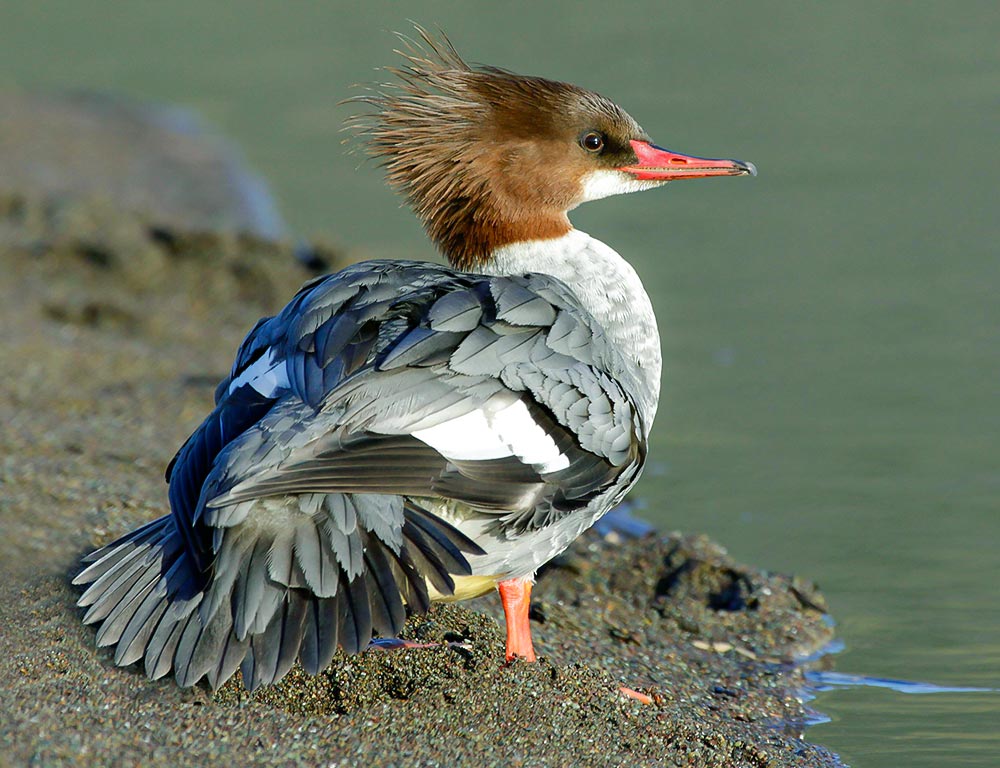
- Scientific name: Mergus merganser
- Population: Stable
- Life span: 10-15 years
- Size: 22-28 inches
- Weight: 2-4 pounds
- Food: Fish, crustaceans, insects
The Common Merganser, a large diving duck, is found in freshwater habitats across North America, Europe, and Asia. With a slender red bill, these mergansers feed on fish, crustaceans, and insects.
Their streamlined bodies and excellent swimming abilities make them efficient hunters in aquatic environments.
15. Red-breasted Merganser
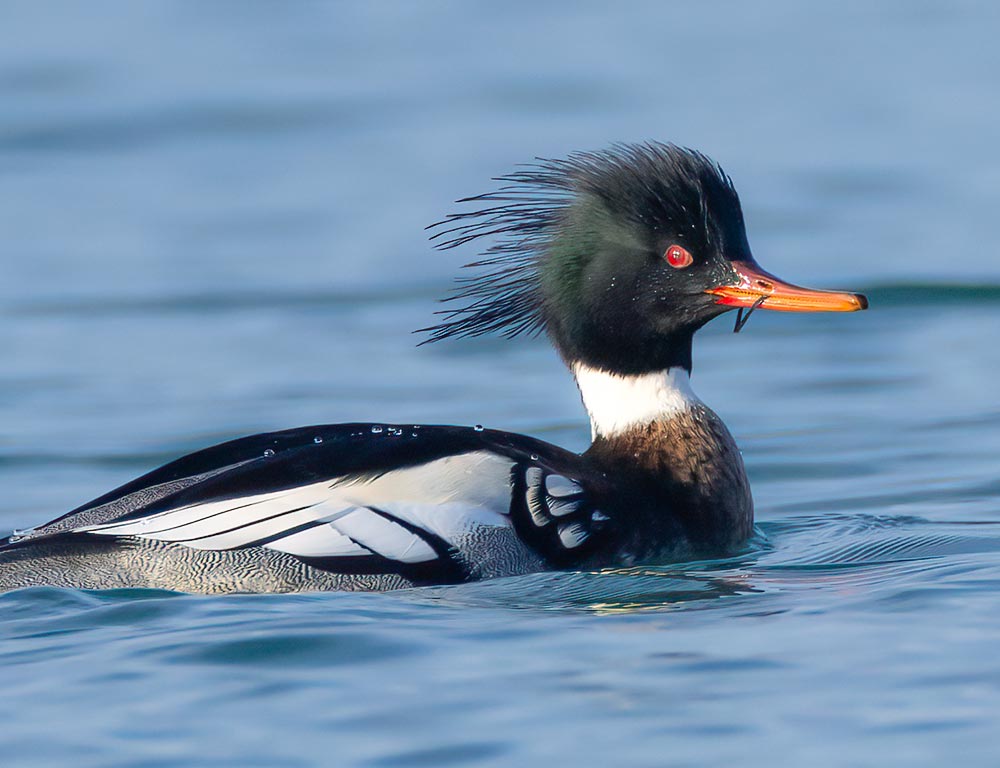
- Scientific name: Mergus serrator
- Population: Stable
- Life span: 5-10 years
- Size: 20-24 inches
- Weight: 1.5-3 pounds
- Food: Fish, crustaceans, insects
The Red-breasted Merganser, another diving duck species, boasts a distinctive red-brown neck and a slender, serrated bill. Inhabiting coastal waters, these mergansers primarily feed on fish, crustaceans, and insects.
Their agile swimming and diving capabilities make them well-adapted to marine environments.
So, each of these birds exhibits fascinating adaptations that go beyond their striking red beaks. Cardinals, forming lifelong bonds, use the intensity of their red plumage to convey social standing and reproductive success.
Toucans surprise with lightweight bills due to a hollow structure. Lovebirds, known for their strong pair bonds, share intimate moments with mates.
Red-headed woodpeckers showcase aerial acrobatics in mid-air insect captures. Robins, with acute hearing, pinpoint earthworms beneath the ground.
Spoonbills, with uniquely shaped bills, sweep shallow waters, capturing prey by touch. House Finches thrive in urban settings, celebrated for diverse vocalizations.
Male Purple Finches adjust diets for more vibrant plumage. Painted Buntings, North America’s colorful gems, boast hues of blue, green, and red. Summer Tanagers display swift, precise movements while feeding on bees.
Hepatic Tanagers derive their name from liver-like red plumage. Elegant Trogons, secretive in dense forests, are more heard than seen.
Vermilion Flycatchers impress with aerial displays for mate attraction. Common Mergansers sport “sawbill” beaks for slippery fish, while Red-breasted Mergansers use specialized serrations for underwater prey capture.
Each bird unveils a story of adaptation, behavior, and beauty in the intricate tapestry of the avian world.
Wrapping Up
Our exploration of birds with red beaks, it’s evident that these winged wonders contribute significantly to the biodiversity of our planet.
From the iconic Northern Cardinal’s melodic tunes to the exotic elegance of the Elegant Trogon, each species tells a unique story of adaptation and survival.
The vibrancy of their plumage and the specialized nature of their beaks showcase the intricate dance between form and function in the natural world.
As stewards of the environment, understanding and appreciating these birds not only enhances our connection to nature but also emphasizes the importance of conservation efforts to ensure the continued existence of these captivating and diverse avian species. Thank you so much.